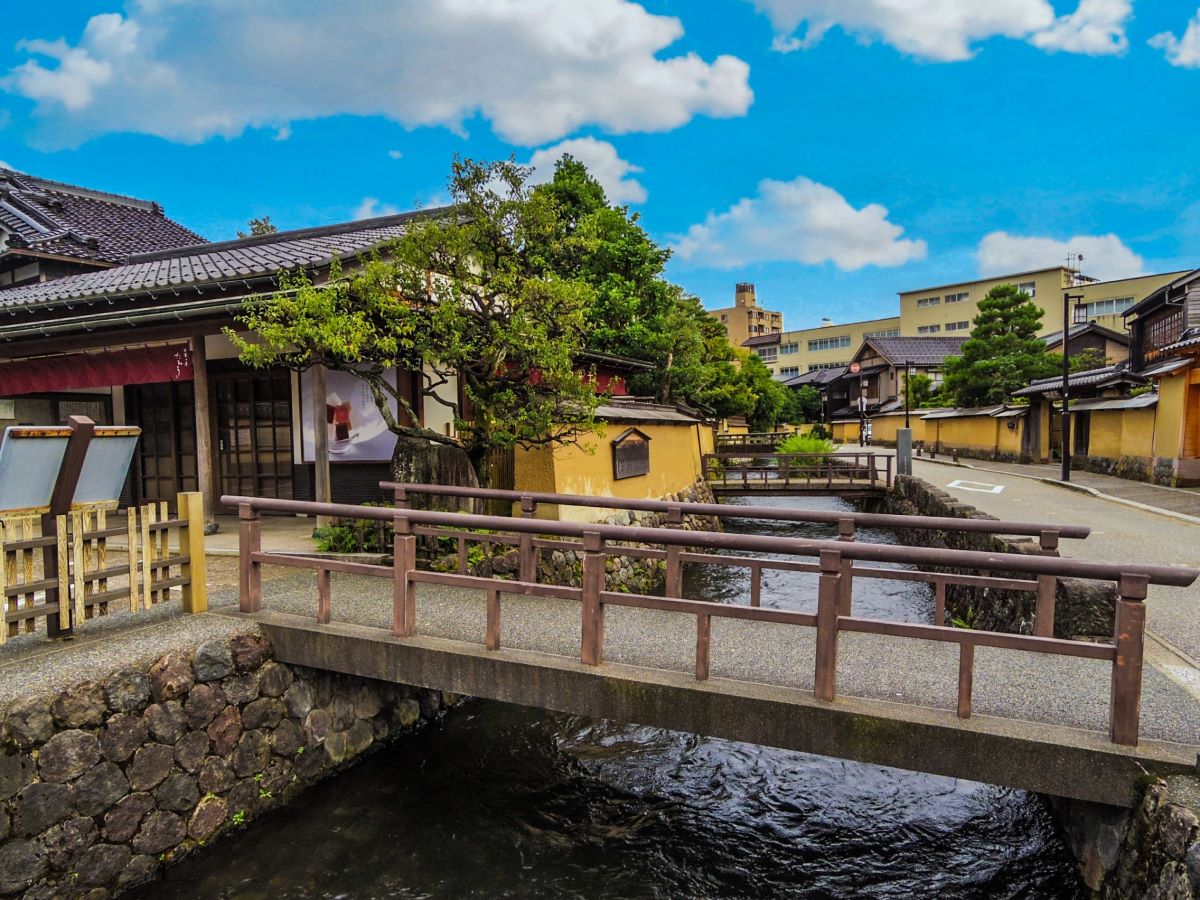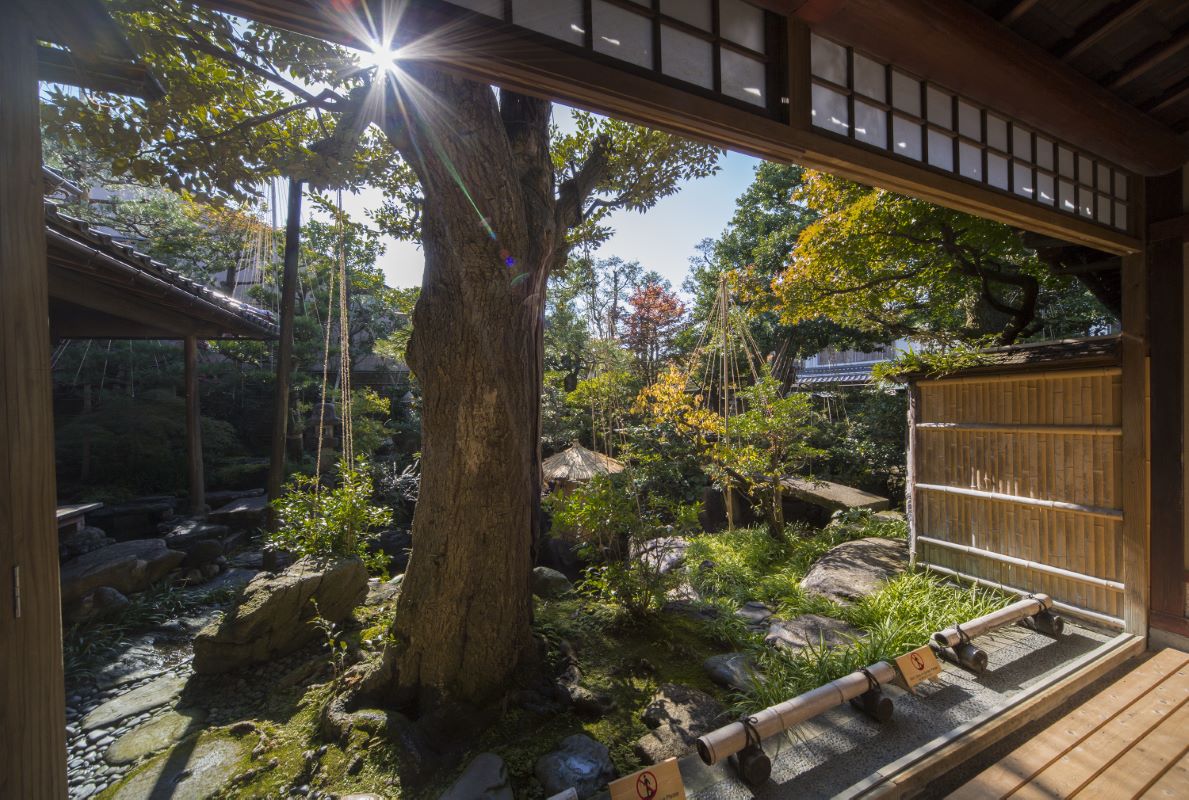The Nagamachi Samurai District in Kanazawa is a stunningly preserved area of the city that offers visitors a glimpse into Japan’s feudal past.

This historical district was once home to samurai and their families during the Edo period, and today it retains much of its old-world charm.
The narrow streets are lined with traditional houses called bukeyashiki, which used to shelter the families of feudal warriors.
The area is surrounded by earthen walls and private entrance gates, and water canals run through the district.

Visitors to Nagamachi can explore the area’s historic atmosphere and learn about the lives of the samurai who once lived there. Some of the traditional houses have been turned into museums, offering a fascinating look into the daily lives of these feudal warriors.
Other houses have been converted into shops and restaurants, providing visitors with a taste of local cuisine and crafts.
History

The area preserves a unique atmosphere with its remaining residences, earthen walls, private entrance gates, narrow lanes, and water canals. The district was once home to samurai and their families, who resided there during the Edo period.
Origins of Nagamachi Samurai District
The origins of Nagamachi Samurai District can be traced back to the late 16th century when Maeda Toshiie, a powerful daimyo, established the Kaga Domain. The Kaga Domain was one of the wealthiest and most powerful domains in Japan during the Edo period. The samurai who served the Maeda clan were given land in Nagamachi as a reward for their service.
The samurai who lived in Nagamachi were mid to high-ranking and were responsible for protecting the castle and the city. They built their homes in a traditional Japanese style, with earthen walls and private entrance gates to protect their families from potential attacks. The narrow lanes and water canals that wind through the neighborhood added to the charm of the area.
Samurai Lifestyle in Nagamachi

The samurai who lived in Nagamachi had a strict code of conduct known as bushido. They were expected to follow the principles of loyalty, honor, and discipline. The samurai were not only skilled warriors but also cultured individuals who appreciated the arts and literature.
The samurai lifestyle in Nagamachi was centered around the castle and their duties as protectors of the city. They would train in martial arts, attend tea ceremonies, and participate in poetry competitions. The samurai were also responsible for overseeing the administration of the domain and maintaining law and order in the city.
Decline of Nagamachi District
The decline of Nagamachi Samurai District began in the late 19th century when the samurai class was abolished. The Meiji government implemented a new system that eliminated the samurai class and created a new social structure based on Western models. The samurai lost their status and privileges, and many were forced to find new occupations.
As a result, many of the samurai homes in Nagamachi were abandoned or sold to merchants and craftsmen. The area fell into disrepair, and many of the historic buildings were destroyed. However, in recent years, there has been a renewed interest in preserving the area’s cultural heritage, and many of the historic buildings have been restored.
Attractions
You can explore the narrow streets and traditional houses that have retained their old-fashioned charm. Here are some of the attractions that visitors can enjoy:
Nomura-ke Museum

The Nomura-ke Museum is a restored samurai residence with a beautiful, small garden. It is centrally located in the Nagamachi District and is open from 8:30 to 17:30 (until 16:30 from Oct through Mar). The museum is closed on December 26 and 27, January 1 and 2. Admission is 550 yen. Visitors can catch a glimpse of the lifestyle of the samurai during the Edo period.

The museum features displays of samurai armor, weapons, and other artifacts. The garden is a serene oasis in the middle of the bustling city.
Ashigaru Shiryokan Museum
The Ashigaru Shiryokan Museum is a free museum that housed the foot soldiers during the Edo period. The museum features displays of weapons, armor, and other artifacts. Most of the displays are in Japanese only. Visitors can learn about the life of the foot soldiers and the role they played in the samurai hierarchy.
Terashima Residence
The Terashima Residence is a traditional house that used to shelter the family of a feudal warrior. The house has been preserved in its original state and features displays of traditional Japanese crafts and artifacts. Visitors can learn about the daily life of a samurai family and the customs and traditions of the Edo period.
Shinise Kinenkan Museum
The Shinise Kinenkan Museum is a museum that showcases the traditional crafts and industries of Kanazawa. The museum features displays of lacquerware, gold leaf, and other traditional crafts. Visitors can learn about the history and techniques of these crafts and watch demonstrations by skilled artisans. The museum also has a gift shop where visitors can purchase souvenirs and handmade crafts.

Getting There
By Train
The Nagamachi Samurai District is located in Kanazawa, which is accessible by train. Visitors can take the Hokuriku Shinkansen Line from Tokyo, Nagano, or Toyama to reach Kanazawa Station. From there, it is a 10-minute bus ride to Nagamachi. Alternatively, visitors can take a taxi from the station, which takes about 5 minutes and costs around 1,000 yen.
By Bus
The most convenient way to get to Nagamachi is by bus. Visitors can take the Kanazawa Loop Bus, which stops at major tourist attractions in the city, including Nagamachi. The bus runs every 15 minutes and costs 500 yen for a one-day pass. Visitors can also take the Korinbo Bus from Kanazawa Station, which takes about 10 minutes and costs 200 yen.



